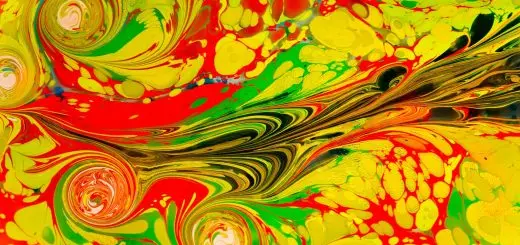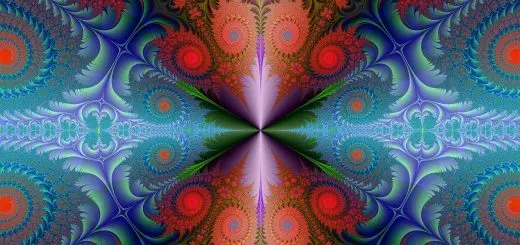Yin and Yang in Taoist Cosmology: Dualistic Harmony

Looking for more amazing products? Check out our online store and explore our collection here! Happy shopping!
Before diving in, please note: This post is for informational purposes only. If you’d like to know more about how we approach topics, feel free to check out our friendly Disclaimer Page.
Hey there, amazing readers! 
We’re committed to delivering quality posts, and your support (even just sticking around despite the ads) means everything to us. So, bear with us, and thanks for helping us keep the good vibes rolling. Now, on to the fun stuff!
TRANSLATE BUTTON AT THE END OF THE ARTICLE
A Quick Overview: Introduction to Taoist Cosmology
Taoist cosmology is a fundamental aspect of Taoism, a philosophical and spiritual tradition that originated in ancient China.
At the core of Taoist beliefs is the concept of the Tao, which represents the natural order of the universe.
Taoist cosmology seeks to explain the structure and workings of the universe, including the interplay of opposing forces known as Yin and Yang.
These forces are seen as complementary and interconnected, with each containing the seed of the other, creating a harmonious balance in the universe.
Understanding Yin and Yang
Yin and Yang are two fundamental principles in Taoist philosophy that represent the dualistic nature of the universe.
Yin is associated with qualities such as darkness, passivity, femininity, coldness, and contraction, while Yang is associated with qualities such as light, activity, masculinity, warmth, and expansion.
Together, Yin and Yang form a dynamic system of opposites that are in a constant state of flux and transformation.
The interaction between Yin and Yang is believed to be the driving force behind all aspects of existence.
The Concept of Dualistic Harmony
In Taoist cosmology, the concept of dualistic harmony emphasizes the importance of finding balance and equilibrium between Yin and Yang.
This balance is essential for achieving harmony within the universe and within oneself.
Taoists believe that all things contain both Yin and Yang aspects, and that true harmony is achieved when these opposing forces are in perfect equilibrium.
By embracing the concept of dualistic harmony, individuals can cultivate a sense of inner peace and alignment with the natural order of the universe.
Yin and Yang in Nature
Yin and Yang are deeply embedded in the natural world, with countless examples of their interplay found in the environment.
For example, night and day, winter and summer, and the ebb and flow of tides are all manifestations of Yin and Yang in nature.
Taoists observe these natural cycles as reflections of the dualistic harmony that underpins the universe, reminding us of the interconnectedness of all things and the need for balance in our interactions with the environment.
Yin and Yang in Human Existence
Just as Yin and Yang are present in the natural world, they are also believed to exist within each individual.
In Taoist philosophy, the body, mind, and spirit are seen as interconnected aspects of a person’s being, each influenced by the dynamic interplay of Yin and Yang energies.
By recognizing and cultivating these energies within themselves, individuals can achieve a state of balance and harmony that promotes health, vitality, and spiritual growth.
The Interplay of Yin and Yang
The interplay of Yin and Yang is a complex and nuanced process that shapes all aspects of existence.
According to Taoist cosmology, Yin and Yang are not static opposites, but rather dynamic forces that are constantly in motion.
The relationship between Yin and Yang is characterized by mutual interdependence and transformation, with each force giving rise to the other in a perpetual cycle of creation and destruction.
This interplay is essential for maintaining the harmony and balance of the universe.
Achieving Balance in Taoist Philosophy
Central to Taoist philosophy is the idea of achieving balance and harmony through the integration of Yin and Yang energies.
This balance is not achieved through the suppression of one force in favor of the other, but rather through the recognition and acceptance of both Yin and Yang as essential aspects of existence.
By embracing the interconnectedness of opposites and seeking harmony within oneself and with the world around them, individuals can cultivate a sense of wholeness and fulfillment in their lives.
Yin and Yang in Traditional Chinese Medicine
Yin and Yang play a central role in traditional Chinese medicine, where they are used to diagnose and treat various health conditions.
According to Taoist principles, illness is often the result of an imbalance of Yin and Yang energies within the body.
Practitioners of traditional Chinese medicine seek to restore harmony by using treatments such as acupuncture, herbal remedies, and tai chi to rebalance the body’s energy systems and promote healing.
By addressing the root causes of illness and restoring equilibrium, traditional Chinese medicine aims to bring the body back into a state of optimal health.
Symbolism of Yin and Yang
The symbol of Yin and Yang, known as the Taijitu, is a widely recognized emblem of Taoist philosophy that represents the interplay of opposites in the universe.
The symbol consists of a black and white circle divided by a curved line, with each half containing a small dot of the opposite color.
This symbolizes the idea that Yin and Yang are interconnected and contain the seed of one another within them.
The Taijitu serves as a visual reminder of the dynamic and harmonious nature of existence, encouraging individuals to embrace the cyclical changes and transformations that are inherent in life.
Yin and Yang in Taoist Art
In Taoist art, the concept of Yin and Yang is expressed through various symbols, motifs, and artistic techniques that reflect the harmony and balance of the universe.
Traditional Chinese paintings often depict natural scenes such as mountains, rivers, and forests, with an emphasis on capturing the essence of Yin and Yang energies in the landscape.
Taoist artists use techniques such as contrasting colors, textures, and shapes to evoke the dynamic interplay of opposites and convey a sense of unity and balance in their work.
Through their art, Taoist artists seek to inspire contemplation, reflection, and a deeper understanding of the interconnectedness of all things.
Applying Yin and Yang in Daily Life
In Taoist philosophy, the principles of Yin and Yang can be applied to everyday life to cultivate a sense of balance, harmony, and well-being.
By recognizing the presence of Yin and Yang energies in all aspects of existence, individuals can make conscious choices that promote harmony and alignment with the natural order of the universe.
Practices such as meditation, qigong, and mindful living can help individuals connect with their inner energies and maintain a sense of equilibrium in the face of life’s challenges.
By embracing the dualistic nature of reality and striving for balance in their thoughts, actions, and relationships, individuals can lead more fulfilling and meaningful lives.
Conclusion
In conclusion, the concept of Yin and Yang in Taoist cosmology offers a profound insight into the dualistic harmony that underpins the universe.
By recognizing the interplay of opposing forces and seeking balance and equilibrium within oneself, individuals can cultivate a sense of harmony, wholeness, and well-being.
Through practices such as traditional Chinese medicine, Taoist art, and daily mindfulness, individuals can harness the power of Yin and Yang to promote health, vitality, and spiritual growth.
By embracing the cyclical nature of existence and striving for balance in all aspects of life, individuals can experience a deeper connection to the natural order of the universe and achieve a sense of peace and fulfillment.

The Enlightenment Journey is a remarkable collection of writings authored by a distinguished group of experts in the fields of spirituality, new age, and esoteric knowledge.
This anthology features a diverse assembly of well-experienced authors who bring their profound insights and credible perspectives to the forefront.
Each contributor possesses a wealth of knowledge and wisdom, making them authorities in their respective domains.
Together, they offer readers a transformative journey into the realms of spiritual growth, self-discovery, and esoteric enlightenment.
The Enlightenment Journey is a testament to the collective expertise of these luminaries, providing readers with a rich tapestry of ideas and information to illuminate their spiritual path.
Our Diverse Expertise
While our primary focus is on spirituality and esotericism, we are equally passionate about exploring a wide range of other topics and niches 

To ensure we provide the most accurate and valuable insights, we collaborate with trusted experts in their respective domains 
Our blog originally focused on spirituality and metaphysics, but we’ve since expanded to cover a wide range of niches. Don’t worry—we continue to publish a lot of articles on spirituality! Frequently visit our blog to explore our diverse content and stay tuned for more insightful reads.
Hey there, amazing reader! 
Check out our store here and take a peek at some of our featured products below! Thanks for being awesome!











